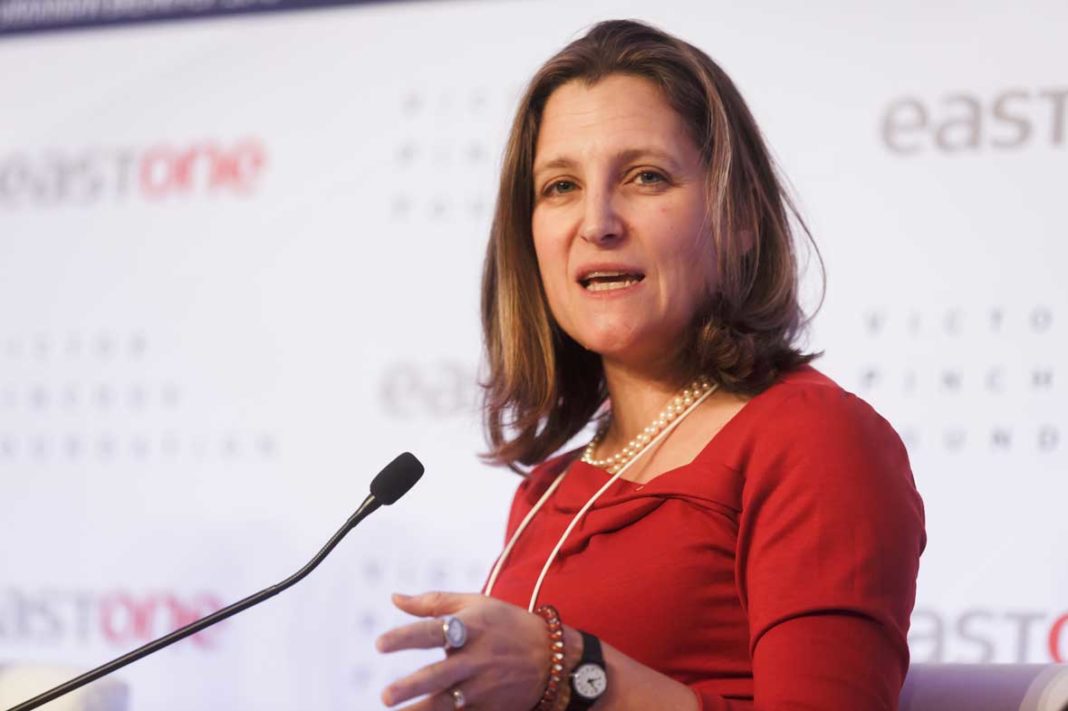OTTAWA—The federal government is currently faced with a politician’s worst economic nightmare, a perfect storm of rising inflation, rising interest rates and, as is looking very likely in recent days, a potential recession. As a result, the federal Liberals’ fall economic statement is largely an attempt to have their political cake and eat it too, aiming at stimulating higher production while at the same time not stoking the inflationary flames any higher.
In that regard, the Liberal economic statement seems to have succeeded, at least somewhat, in walking what Finance Minster Chrystia Freeland characterized as a prudent and responsible path. “The Fall Economic Statement does have some measures New Democrats have been fighting for to help Canadians deal with rising costs, but I remain concerned about the impact a recession will have on people struggling to get by,” said Carol Hughes, MP for Algoma-Manitoulin-Kapuskasing. “I believe they finally did the right thing by listening to New Democrats and making Canada Student Loans and Canada Apprentice Loans permanently interest-free. This will help students who are struggling with rising debt loads get a good education while cutting back on the money they owe once they get into the job market.”
Other measures Ms. Hughes said she was pleased to see were investments in affordable housing, including the doubling of the first-time homebuyers’ tax credit and an anti-flipping tax to reduce housing speculation, but she added a caveat that there were what she sees as missed opportunities.
“One thing that New Democrats have been pushing for years is to cut the GST from home heating,” said Ms. Hughes. “That’s an easy, concrete way to save people money on an essential service, especially moving into winter, and they ignored this common sense proposal. There’s also nothing in here to address greedflation and the increasing cost of food across the country.”As might be expected, the Conservative Official Opposition was not as charitable toward the Liberal’s fiscal update. “Conservatives will stand for the common people—their paycheques, their homes, their savings—and we will vote against this inflationary scheme,” said Conservative Leader Pierre Poilievre said a statement in the House of Commons following the unveiling of the Liberal economic plans.
Mr. Poilievre went on to chastise the Liberals for not matching the $30.6 billion in new spending over six years outlined in the update with equal budgetary cuts. Although Canadian inflation lingers far behind that being experienced by the nation’s economic partners in other countries, the opposition leader said the government’s plans will drive up inflation and hurt average families. Mr. Poilievre called the prime minister “out of touch” in not doing more to battle inflation and derided the suggestion that outside factors are fueling the current inflation.
The flagship proposal in the economic statement was the Investment Tax Credit for Clean Hydrogen which aims for the nation to be a reliable, premium supplier of energy in a net-zero world of which clean hydrogen is proposed as an essential component. These investment tax credits are being implemented as support investments for clean hydrogen production.
The proposed tax credit will be available for eligible investments that are made as of the Canada Federal Budget 2023 release date and will be phased out after 2030. In this plan, the lowest carbon intensity tier that meets all eligibility requirements may receive a tax credit of at least 40 percent. Not meeting certain labour conditions will reduce the maximum rate by 10 percent. Canada Development Investment Corporation will launch the Growth Fund by the end of 2022, allowing it to begin to invest immediately to meet Canada’s climate and economic goals. During the first half of 2023, the government will put in place a permanent, independent Growth Fund structure.
As part of tackling the longstanding Canadian productivity gap, the federal government is investing in research, infrastructure and labour workforce development. These new investments are aimed at benefiting the labour workforce in Canada with a goal of addressing the nation’s significant labour shortages and to ensure that workers are trained to adapt to the new technologies and systems “needed to solve global climate issues and market demands.”
As part of the Union Training and Innovation Program, employers will be able to obtain union-based apprenticeship training in the skilled trades. The funding provided through this stream will help unions develop green skills training for workers in the trades. As a result of this investment, 20,000 apprentices and journeypersons will be able to gain valuable experience. There will be a proposed $962.2 million investment over eight years in the National Research Council to modernize infrastructure and spur more research and innovation projects; $301.4 million proposed over three years for the Youth Employment and Skills Strategy Program to help young people find jobs placements with additional wraparound support services; $400.5 million over two years towards the Canada Summer Jobs program to fund approximately 70,000 summer placements; $100.2 million over three years to support work placements for First Nations youth via the Income Assistance-First Nations Youth Employment Strategy Pilot; and $33.5 billion via the Canada Infrastructure Program to fund public infrastructure projects ($23 billion of which has currently been invested in over 5,200 projects).
The NDP, whose support is necessary for Prime Minister Justin Trudeau to maintain his minority government, were not effusive in their praise, however. The NDP has spent months calling for a higher windfall tax on large corporations, including energy and grocery companies that they say have seen profits soar during the COVID-19 pandemic, in order to help ease the burden on families. The Liberals did not directly address this issue.
“For Canadians who were told again and again that the prime minister was going to have their backs in this fall economic statement, he’s actually turned his back,” said NDP Leader Jagmeet Singh after the finance minister released her update.
In an increasingly polarized political landscape in which they are handcuffed by minority status, the Liberals appear to have found some kind of middle path where both flanks are not entirely happy, but in which their left flank appears to be secure for now ensuring they will topple later than sooner.




